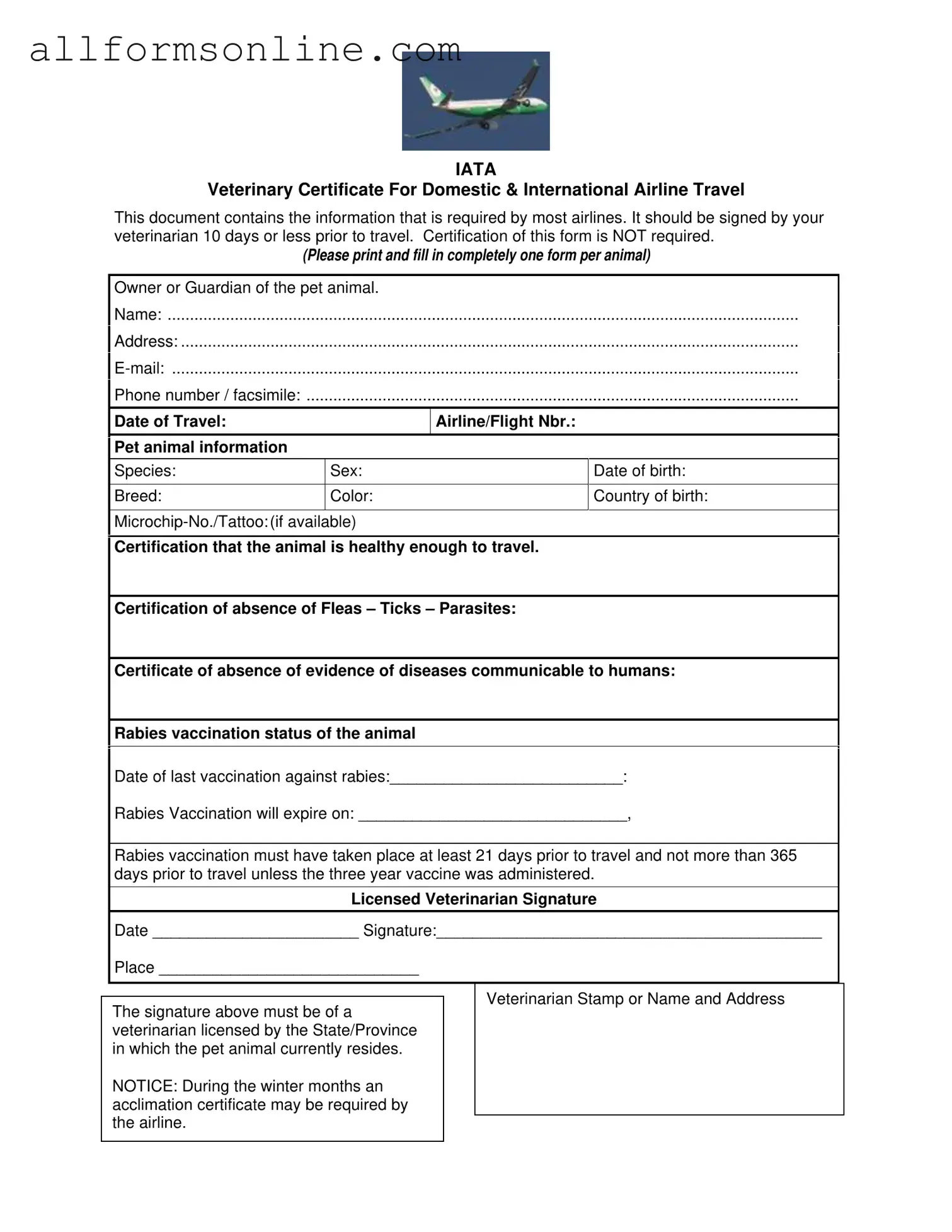What is the purpose of the Veterinary Certificate Travel form?
The Veterinary Certificate Travel form is essential for pet owners who plan to travel with their animals, whether domestically or internationally. This document provides airlines with crucial information about the pet's health status, vaccination records, and other necessary details. By ensuring that the form is filled out completely and signed by a licensed veterinarian, pet owners can facilitate a smoother travel experience for their furry companions.
When should the Veterinary Certificate be signed by a veterinarian?
The form must be signed by a veterinarian no more than 10 days prior to travel. This timeframe ensures that the health information provided is current and accurately reflects the pet's condition. It's important to schedule a veterinary appointment ahead of time to allow for any necessary vaccinations or health checks that may be required before travel.
What information is required on the Veterinary Certificate Travel form?
Pet owners need to provide detailed information about themselves and their pets on the form. This includes the owner's name, address, email, and phone number, as well as the pet's species, breed, sex, color, date of birth, and country of birth. Additionally, the form requires details about the pet's rabies vaccination status, including the date of the last vaccination and its expiration date. The veterinarian must also certify that the animal is healthy enough to travel and free from fleas, ticks, and parasites.
Are there any additional requirements during winter months?
Yes, during the winter months, airlines may require an acclimation certificate in addition to the Veterinary Certificate Travel form. This certificate ensures that the pet can safely endure the temperature conditions during travel. Pet owners should check with their specific airline for any additional requirements or recommendations to ensure a safe journey for their pets.
